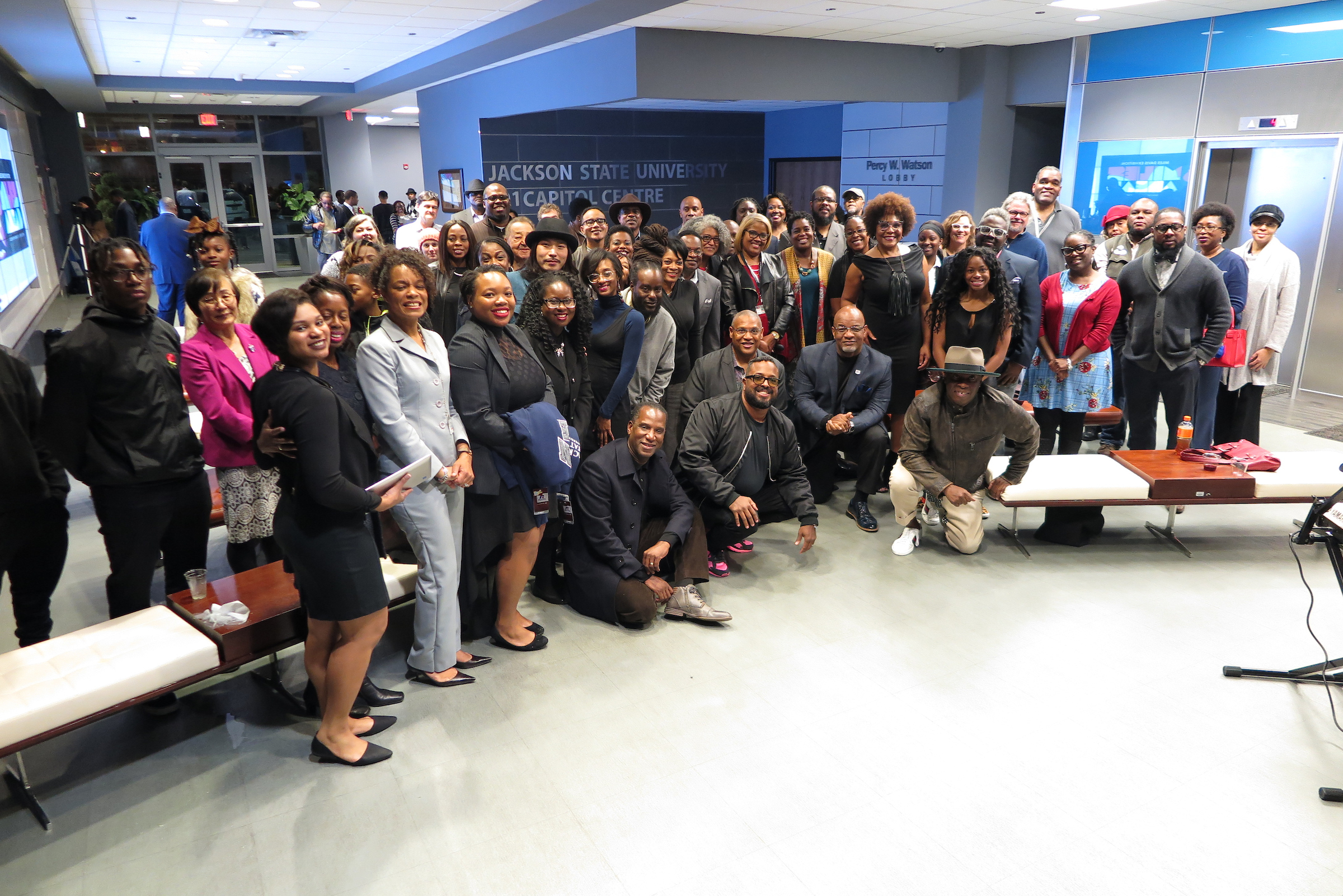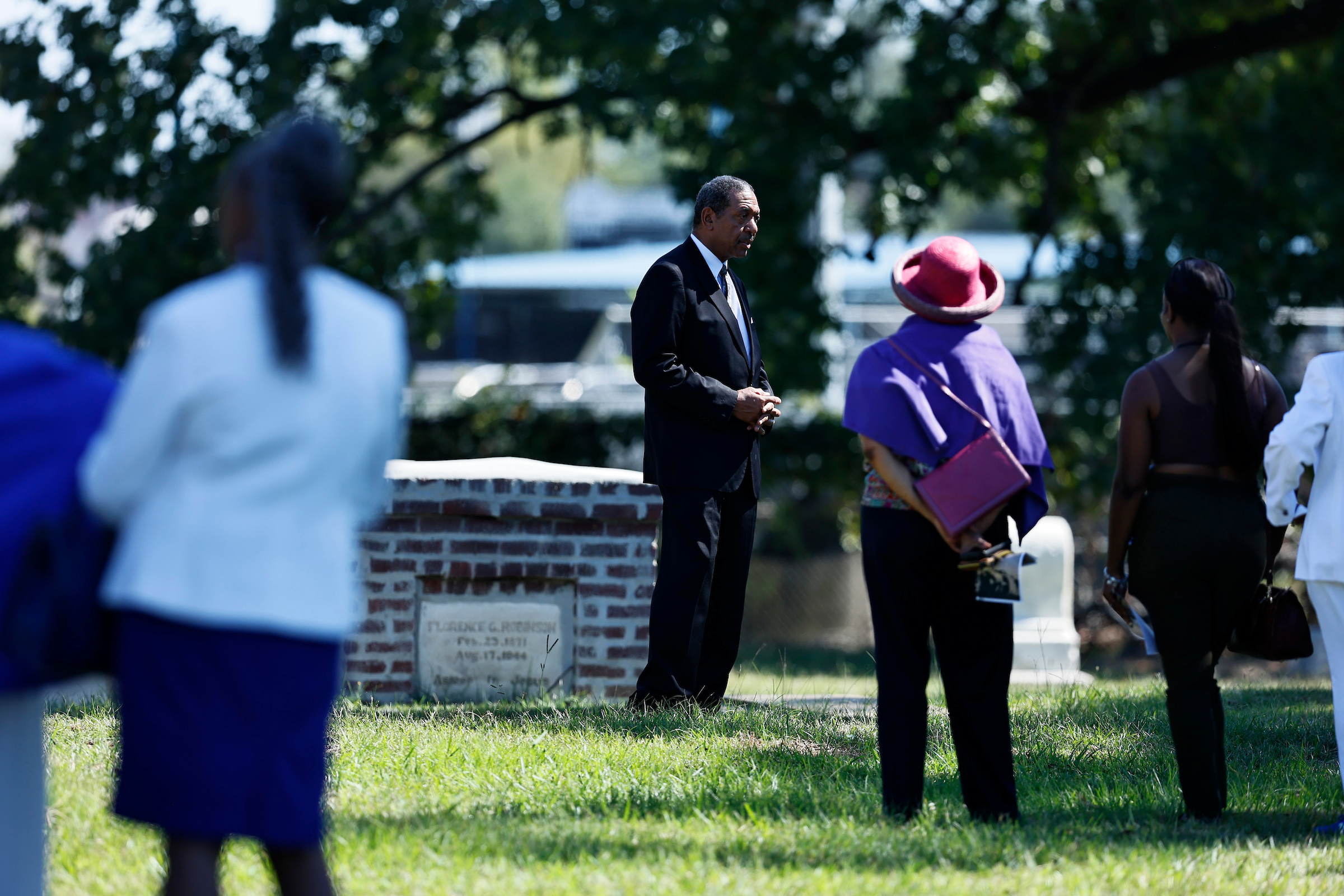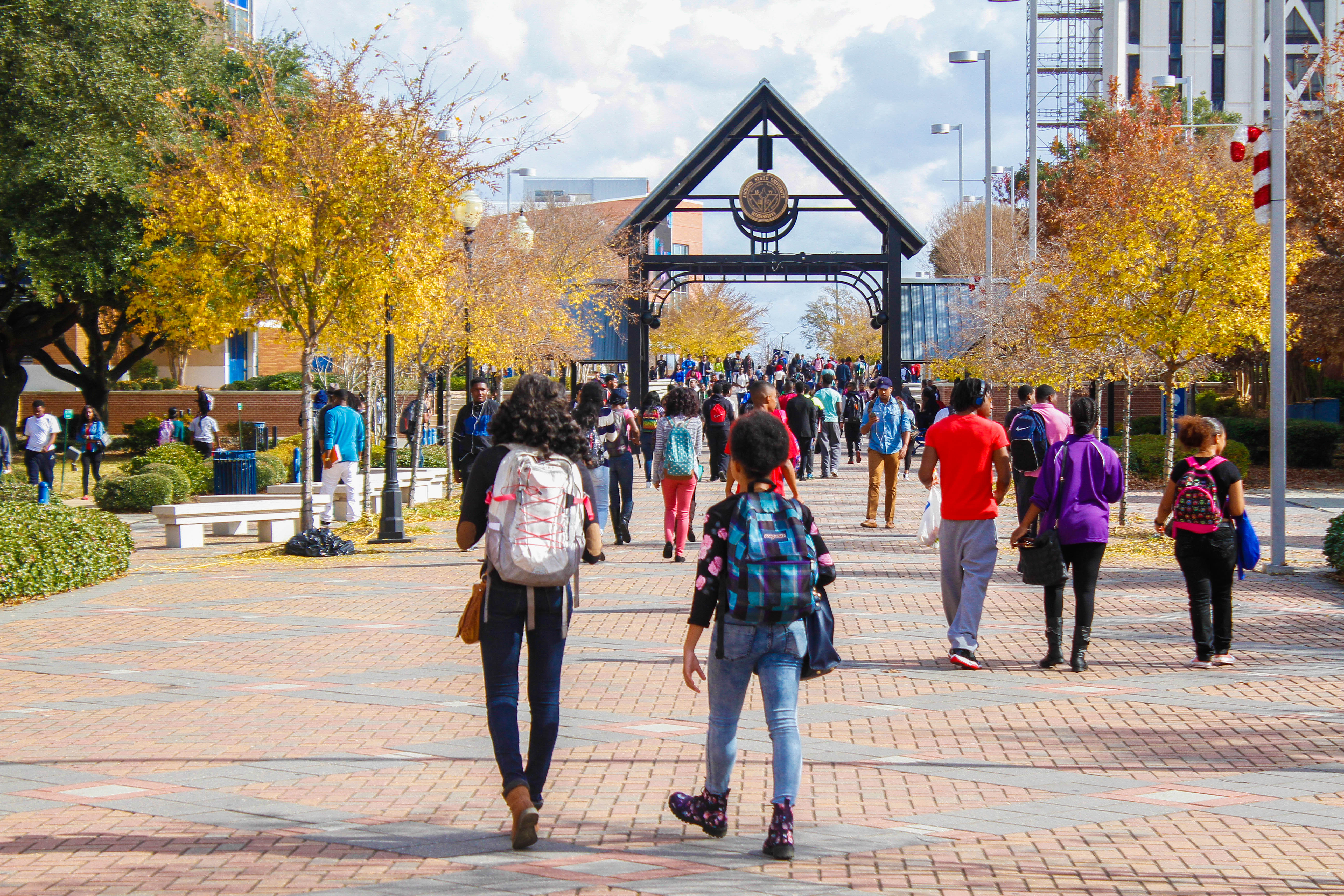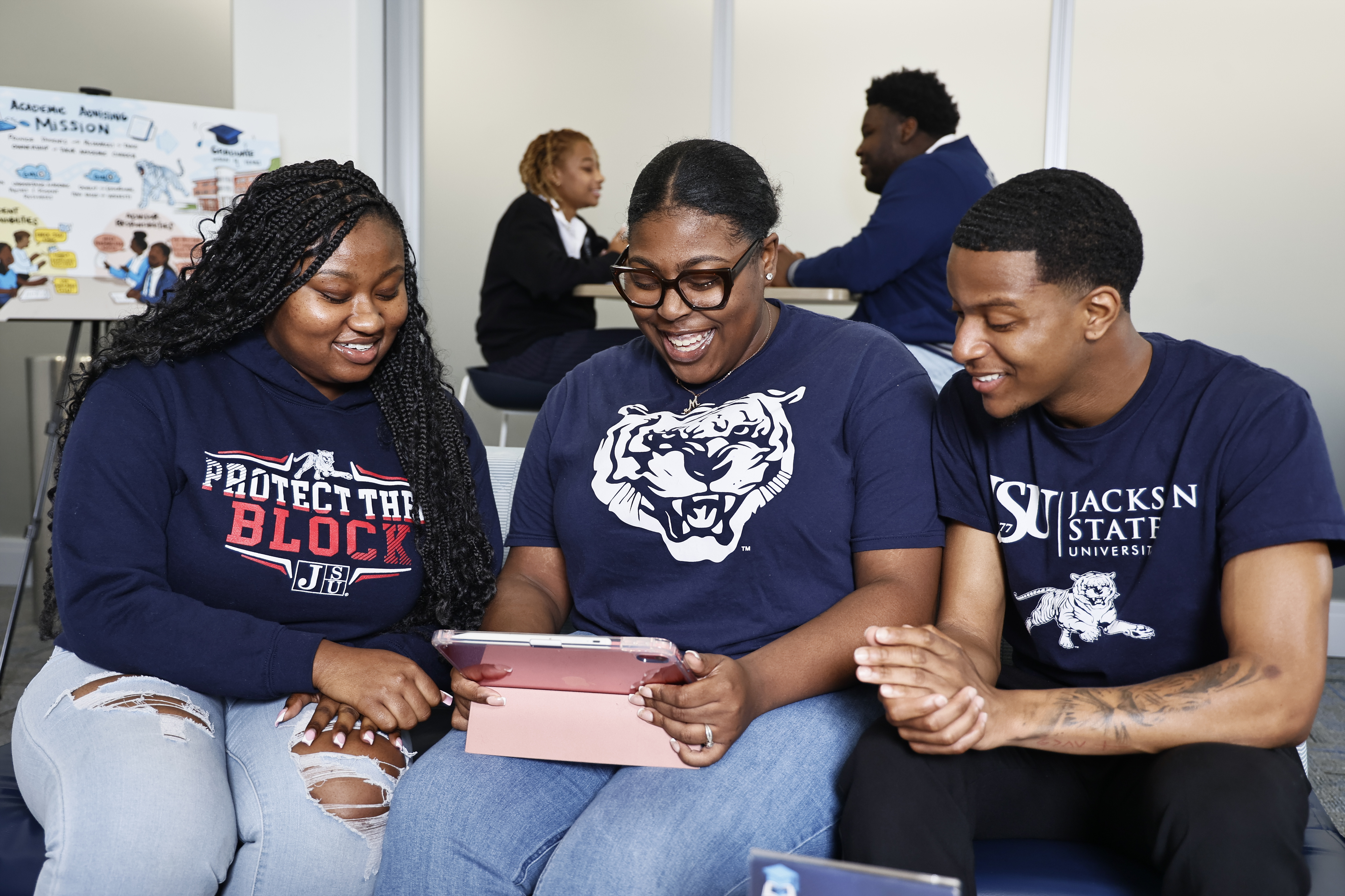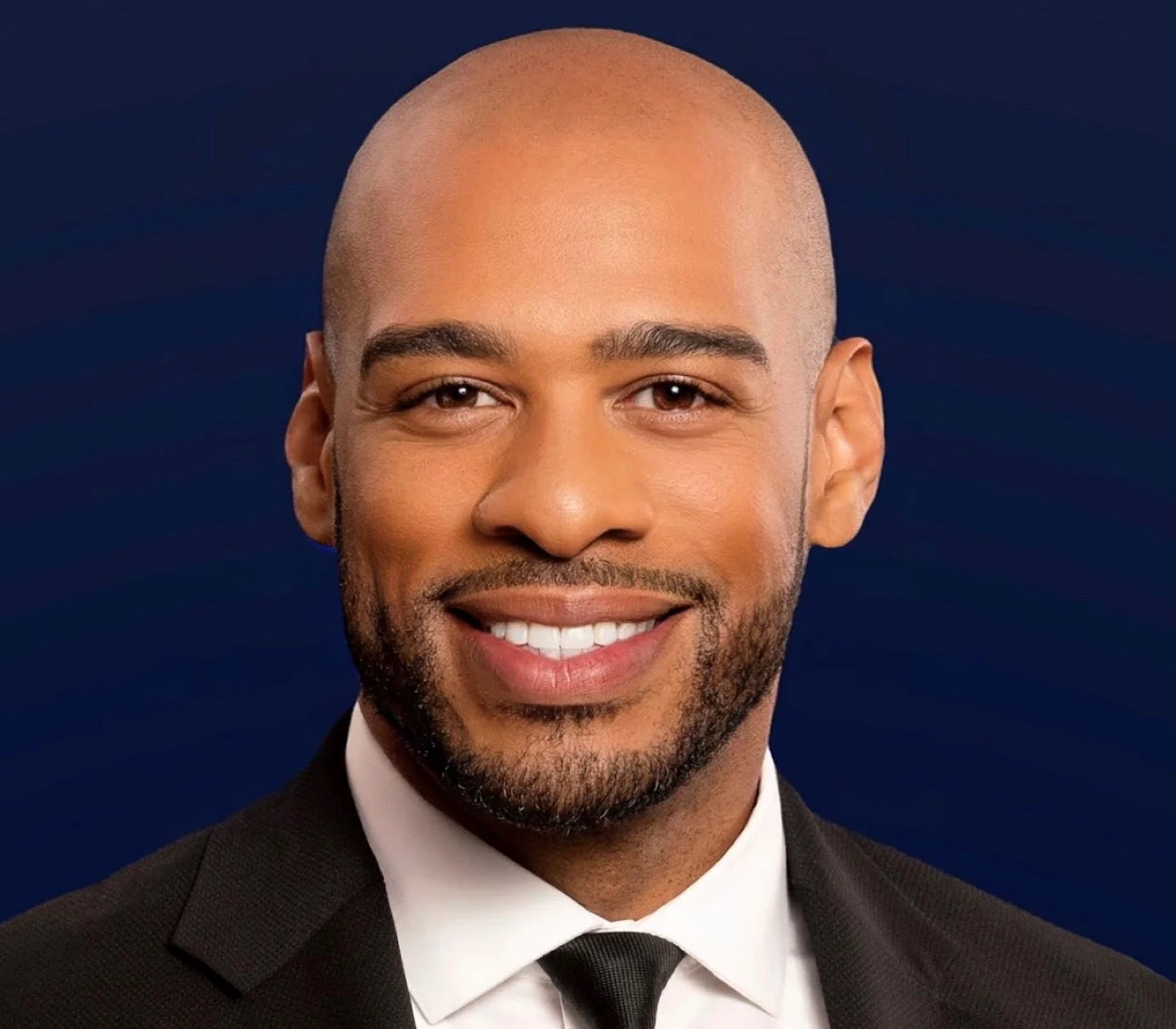
![]() [hr][hr]
[hr][hr]
It was Wednesday night in the capital city, and inside Jackson State University’s Downtown Campus Gallery, 101 W. Capitol St., something was stirring. Soul stirring if one had to define it.
JSU President William B. Bynum Jr. was holding a donor’s reception and those in attendance will be the first to witness an exhibit featuring the art of legendary musician Miles Davis, who died in 1991.
But before guests indulged their curiosity, Bynum reminded them that the evening was serving a dual purpose.
[dropcap]“L[/dropcap]adies and gentlemen, thank you for being here tonight at the donor’s reception. It’s our way of saying thank you for your generosity to Jackson State University and our students,” he spoke into the mic while holding the hand of his wife, Deborah, first lady of the institution.
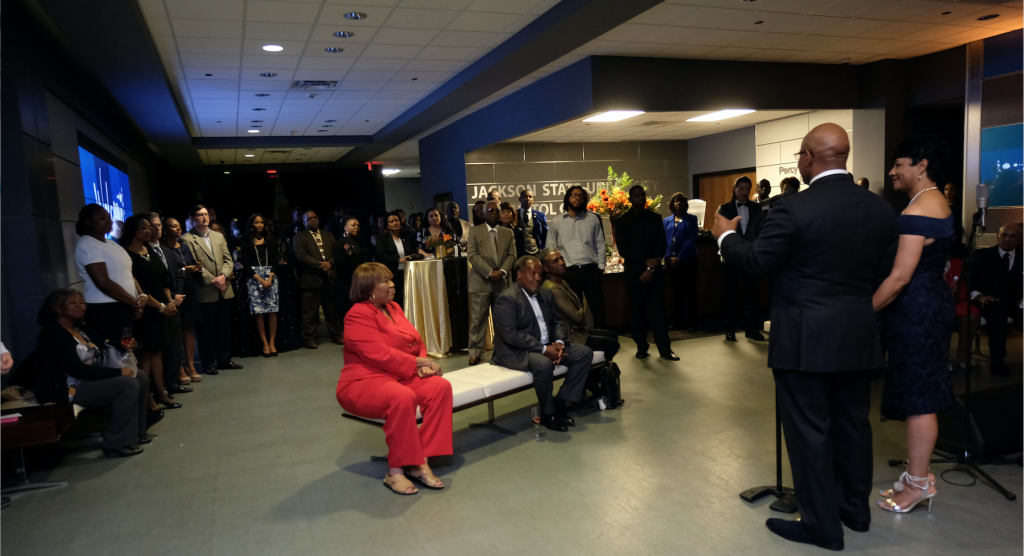
Bynum emphasized the importance of alumni giving at HBCUs and increasing the efforts at JSU. Ensuring local corporations and foundations are familiar with the school, and its brand is a responsibility that everyone should shoulder, he said.
“We need their philanthropic support to help students out. Not only help students who are academically gifted with scholarship funding, but also to help those students who are coming from socioeconomic backgrounds like Debra and I,” said Bynum, who once shared that he didn’t know his family was poor until the day his elementary school delivered a box of perishables to his home.
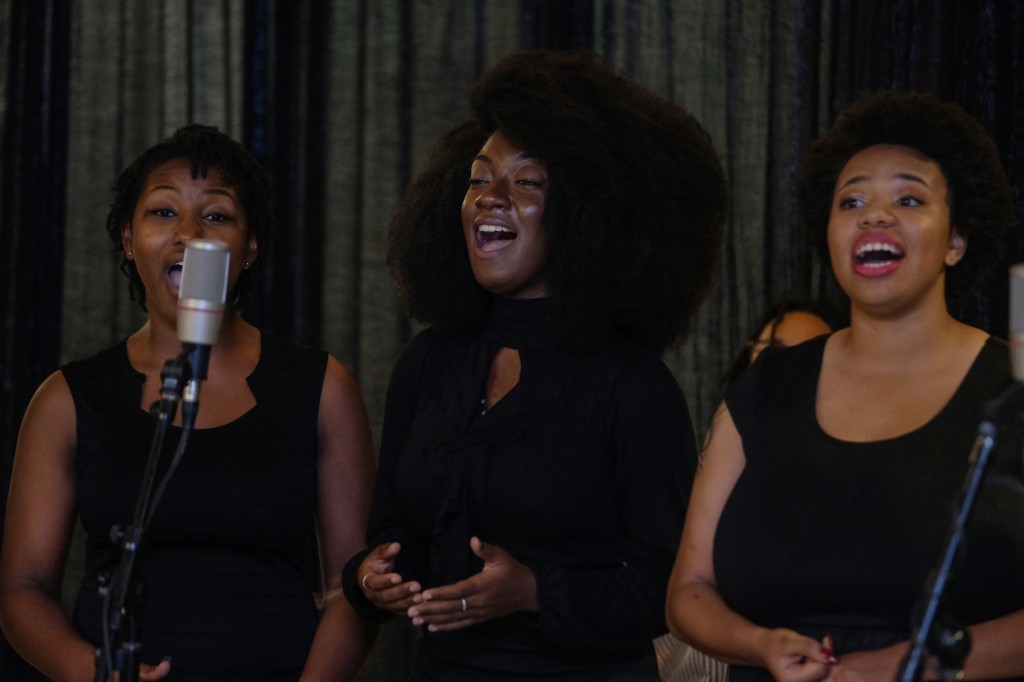
Five hundred or a thousand dollars can really mean a lot and can be the difference between students staying in school versus having to return home to a different environment, said the president.
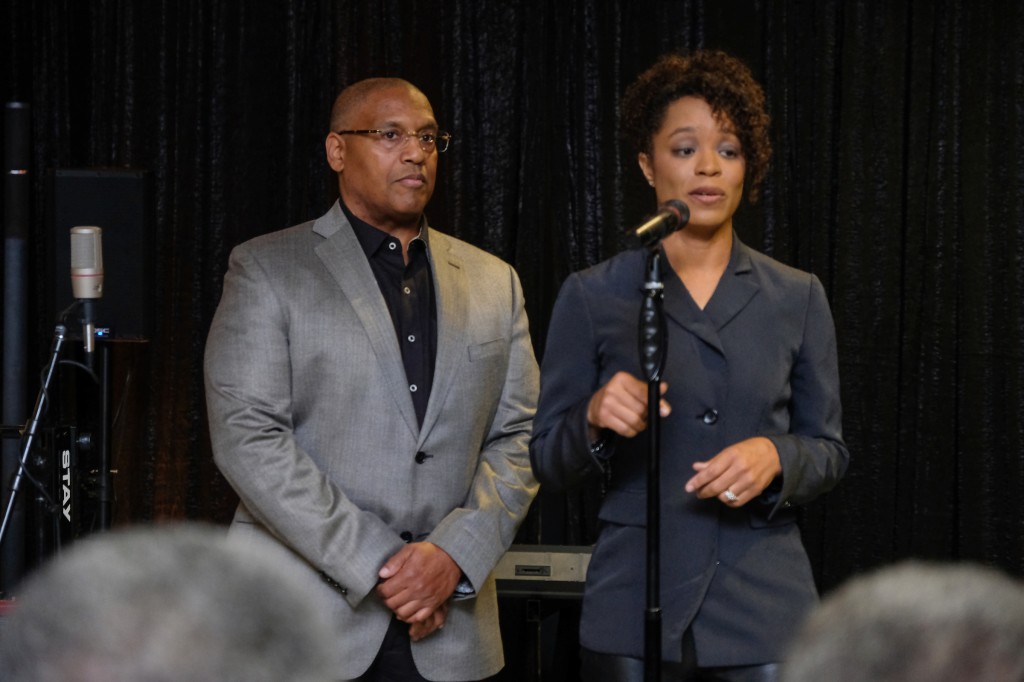
“You’ve heard us say scholarship/gap funding, and that’s what we mean by gap funding. So, please, please continue to give. We have some outstanding students at Jackson State,” he told the audience, before reminding them that the school’s Student Government Association was named most impressive delegation at the National Association of Student Affairs Professionals conference earlier this year. He also recalled the JSU students who won the 2018 Honda Campus All-Star Challenge netting a $75,000 prize.
“Our students deserve and need your support,” he urged. “If you ever get the opportunity to talk with them, I think you will know that we have some really sharp and cool kids from the state of Mississippi and beyond.”
Aside from being married to his beautiful wife, the president says the university’s academically talented, gifted and respectful students are the reason he goes to work every day a happy man.
[dropcap]“I [/dropcap]know that I’m doing exactly what the good Lord put me on this earth to do, and that is to work with young people and their families who are seeking higher education,” said Bynum.
Once applause dissipated, Shonda McCarthy, director of JSU Art Galleries, took the mic with an air of nervous and excited energy. After all, she had been working for at least two years with Darryl Porter, the general manager of Miles Davis Properties, to bring the musician’s art to the HBCU. Now, the moment was finally at hand.
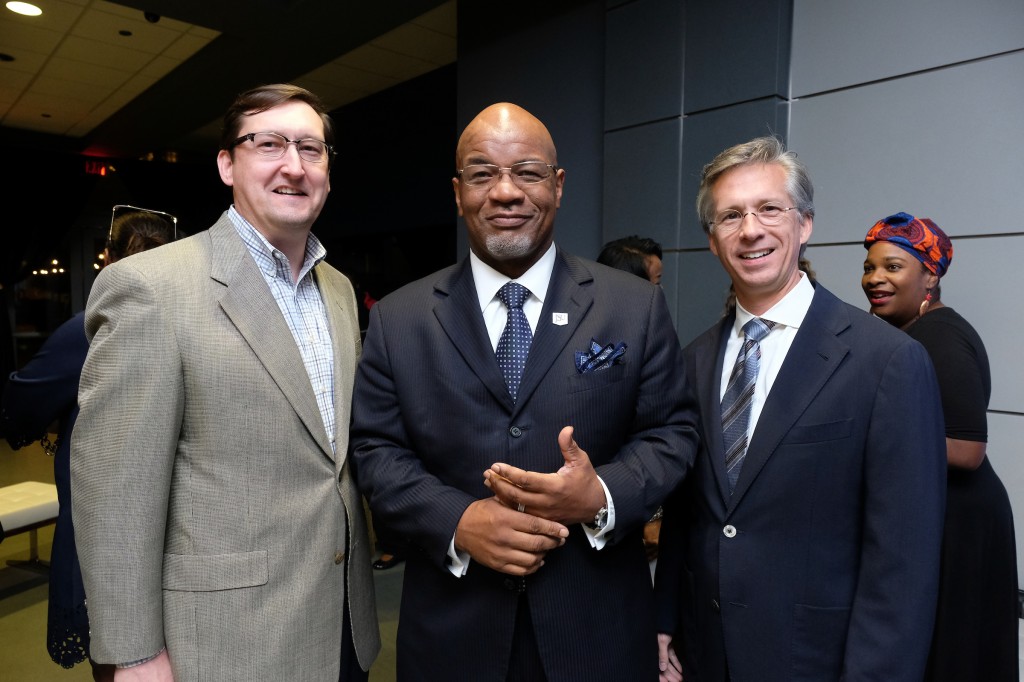
“Today, you will get a chance, in our gallery, to see works and paintings that Miles Davis has made, and it’s the first time some of these works have been shown,” said McCarthy, after she expressed gratitude to those that assisted in making the exhibit a reality.
She then turned her attention to Porter, producer of the 2015 feature film “Miles Ahead” starring Don Cheadle and Ewan McGregor. McCarthy told guests he didn’t just come to solely premiere the work and wave and say hello. She shared how he engaged JSU students and discussed opportunities for internships and collaborations.
Having known Davis and his family since a youth in Chicago, Porter began synching business and marketing for the estate in ’06. Some of his duties include vetting project requests for the use of Davis’ music. “We try to do things that don’t interfere with the integrity of who he was or what he did,” he later explained.
The amount of money on the table clearly holds no sway. Porter revealed that they turned down a large video game offer upon learning that the only time Davis’ music would be used is when a player was killed. They also refused to clear a sample for a major rap act due to the obscene and misogynistic nature of the song. Therefore, it is understandable why context and timing is important.
[dropcap]“We[/dropcap] held some of the art back for almost 20 years. We decided that at the right time we would go back into the marketplace, and we would exhibit Miles’ art on an international basis. I can tell you this is our inaugural stop of that international push for Miles’ exhibit,” said Porter, who is also an entertainment lawyer.
He acknowledged McCarthy’s relentless and lengthy pursuit of the collection and how she would not take “no” or “not now” for an answer.
Although the JSU unveiling is one of a kind, it is not the first tour of Davis’ work. In 2010, the “We Want Miles” art exhibit hit Paris, France; Montreal, Canada; and opened to record numbers in Rio de Janeiro, Brazil. There was also a “Miles Davis: The Art of Cool” exhibit featured in California.
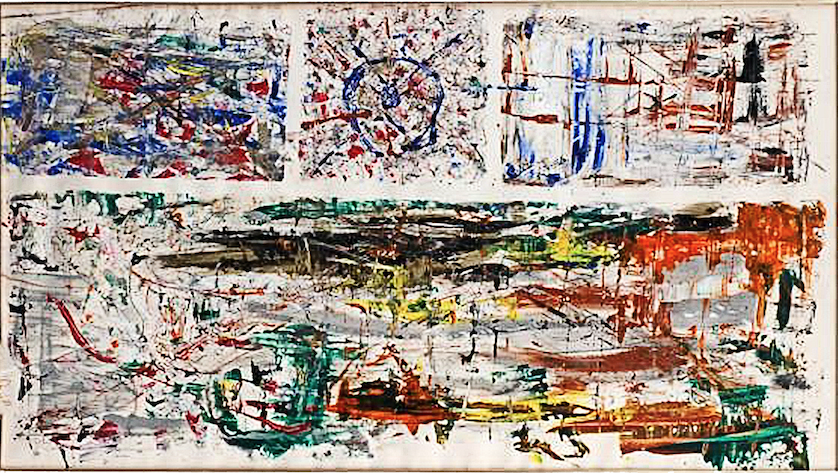
“Miles was a very prolific recording artist, jazz musician, and bandleader who changed the course of music five times over the course of his career,” Porter said to attendants familiar with the 8-time Grammy winners well-documented music legacy but were also there to satiate their unfamiliarity with his fine art.
Porter told folks that Davis was multi-dimensional and frequently forced into the jazz category. “He never cared about jazz. He only cared about music and advancing the music and making sure that people had their own interpretation of music,” he said.
[dropcap]Y[/dropcap]et, when it came to art, Davis seems much more linear – painting horses, women, instruments and himself because they were all things the musician said he loved.
And the pieces in the gallery, curated by McCarthy and her team, were mostly of women – elegant, strong and graceful. Women who looked like warriors and others like dancers. Guests indirectly expressed a fluidity in his works that harmonized his most noted talent with what they had only recently discovered.
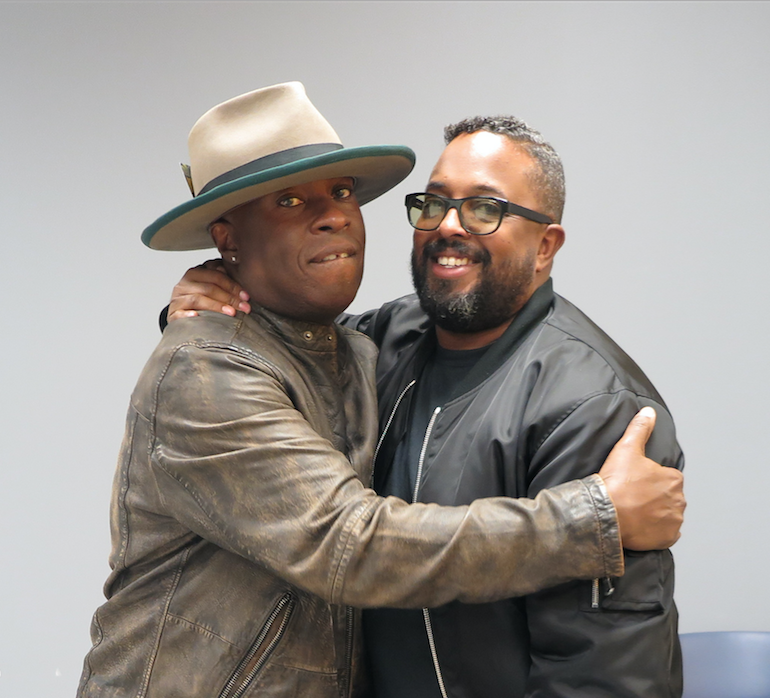
“I’m a fan of art, and I’m a fan of jazz, and this is a blend of both. I’m familiar with Miles Davis’ jazz work but not the art, and I said that I wanted to see it. It’s pretty amazing that someone who was as creative as he was in music is just as creative in his artwork,” said Judge James Graves of the 5th U.S. Circuit Court of Appeals.
Describing the images as both “attractive” and “provocative,” Graves added that he was pleased the exhibit is in Jackson and at Jackson State University.
Graves’ son Jeffrey, a JSU alum, said that he was intrigued by the uniqueness of the exhibit and that the abstract nature of Davis’ work made him almost see music in the art.
After suffering a stroke in ’82, Davis was advised to sketch as excercise for his temporarily paralyzed right hand. Erin Davis, who is one of four children the musician fathered, remembers watching his dad draw and paint.
“He loved it. He loved the idea that he could get his creativity out on paper. He didn’t have to play his horn. He didn’t have to write music. Of course, he wanted to, but this was just another outlet,” said Erin, a percussion drum player that toured with his father.
[dropcap]I[/dropcap]nside the gallery, eyes widened with wonderment as people drifted from one piece to the next. But then again, Vince Wilburn, Davis’ nephew, did say that each day with his uncle was an adventure.
“He was the first to get up in the morning and the first to go to sleep at night. The day was filled with music and me trying to pick his brain as to why he did things this way or that way,” said Wilburn. “He would share his ideas on music and life and politics – ‘save your money, invest.”
JSU donor Mayo Flynt, president of AT&T Mississippi, credits his brother John Flynt, an attorney at Brunini Grantham Grower & Hewes, for turning him on to Davis. “So, when the invitation arrived to come out to tonight’s event. I was excited,” he said. “I thought this would be a good time for a couple of brothers to hang out.”
While Flynt said it’s the tone of Davis’ music that he enjoys, John is drawn to the explosion and creativity that Davis produced. The attorney also said he admired how Davis was able to collaborate and cultivate other artists and “really channel what his idea of music should be, and it didn’t matter who he was performing with they all performed well with him. I still feel that’s a rare talent.”
Both brothers agree that the exhibit is a bright spot for the city and the HBCU. “It’s a great event. It’s a great exhibit. It’s a credit to the university and to President Bynum’s leadership and the young lady (McCarthy) who Mr. Porter said was relentless. Good for her. I’m glad she was relentless,” said Mayo Flynt.
Perhaps Wilburn offers the simplest yet most fitting description of the musician whose 1959 album “Kind of Blue” is listed on Rolling Stones roundup of the 500 greatest albums ever.
“Whatever he set out to do, he was the best at – cooking, painting and, of course, music.”
